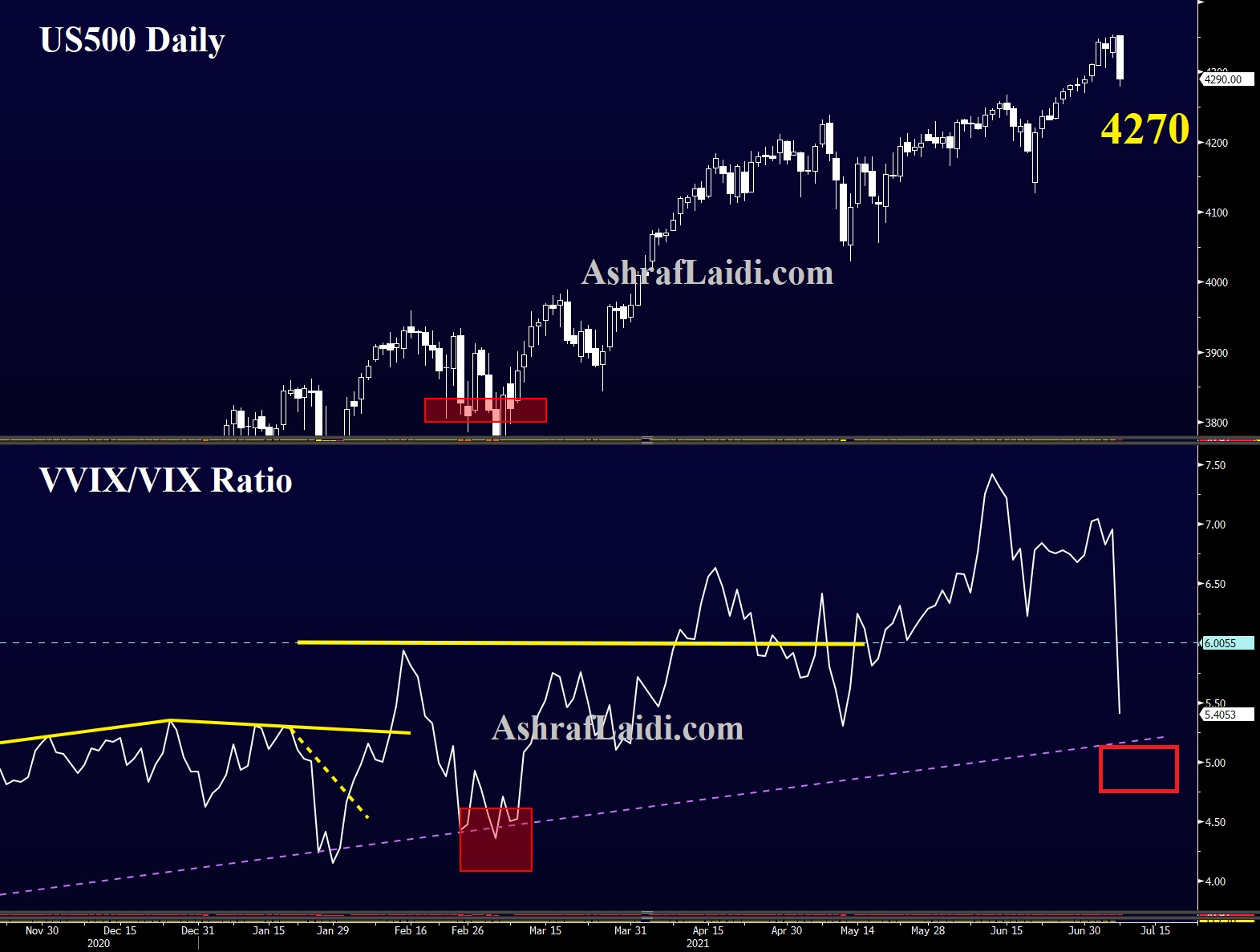by Adam Button
Equities dip in a broader bout of risk-off on a combination of travel advisories in Europe and extended selloffs in overvalued indices (DOW's inability to break above the 34800 high, or divergence from DOW Transports). The relentless bid in bonds continued on Wednesday as the paradigm of bond and USD strength continued. CHF and JPY are the strongest, followed by EUR, while NZD and AUD are at the bottom.
US initial jobless claims came in higher than expected (373K vs exp 350K). Ashraf kept reiterating the message to the WhatsApp Broadcast Group Members: "As long as you're long EUR/USD, stay short AUD/USD as it would set up for a rally in EUR/AUD" and that is exactly what's happening. The long USD/JPY trade did not work out well, but it was later compensated with longs in USD/CAD and shorts in US500. This risk-off is not stopping soon. This VVIX/VIX chart was shared with our the Group earlier.

Convincing explanations for falling yields remain elusive with technical factors and a short squeeze getting much of the play. One factor that can't be ignored is the Fed. The drop in yields accelerated after the June 16 FOMC and that's not a coincidence.
The kneejerk reaction was to push yields higher on a taper but the message now is that the Fed is flirting with a policy mistake. That they could taper/hike as growth slows and temporary inflation recedes.
The FOMC minutes underscored the delicate balance. They said a 'substantial majority' of participants judged that inflation risks were tilted to the upside while 'various participants' mentioned that conditions for a taper would be met 'somewhat earlier' than anticipated.
In a sense, this could be a different kind of taper tantrum. Technically, there isn't much support until 1.23%, where the 200-day moving average currently resides.
Where it gets interesting is the reflexivity embedded in the Fed. They cheered rising yields earlier in the year and will be cognizant that yields and breakevens traders are now betting against their ability to generate 2% inflation. Beyond that, there's a conundrum that Fed and other central bank buying may be what's pushing yields down – not inflation expectations.
Ultimately though, the only way forward is to watch for headlines, economic data and technicals, which is what we will continue to do. July signals are often hazy so we have no expectation that this puzzle will be solved any time soon.
